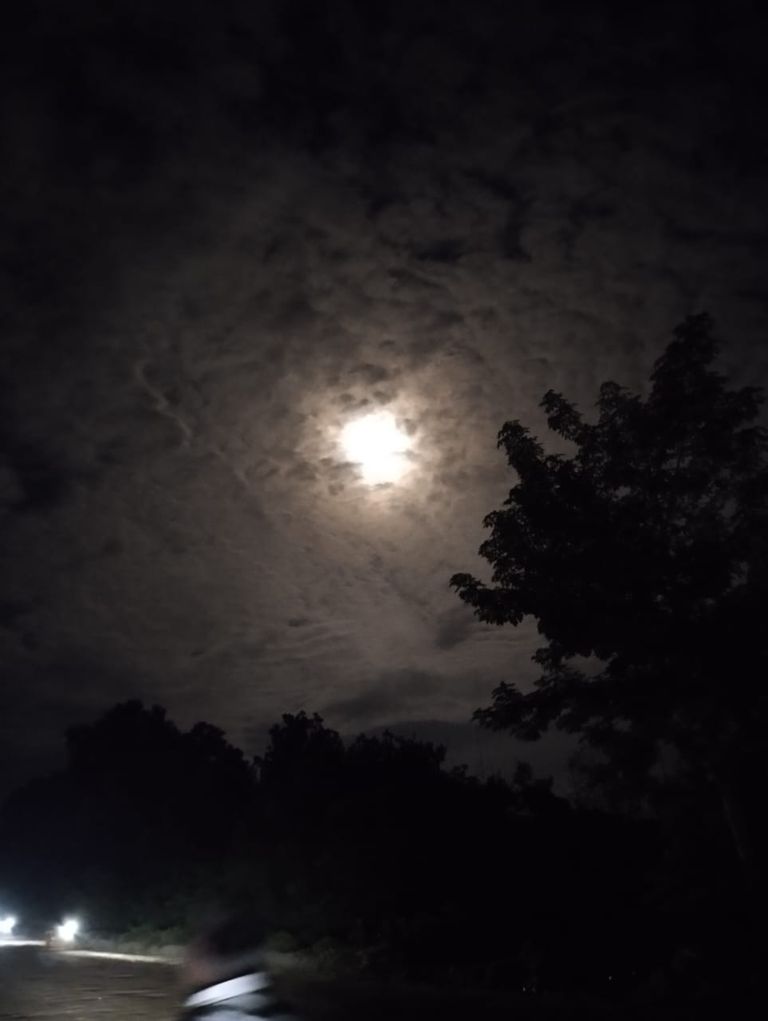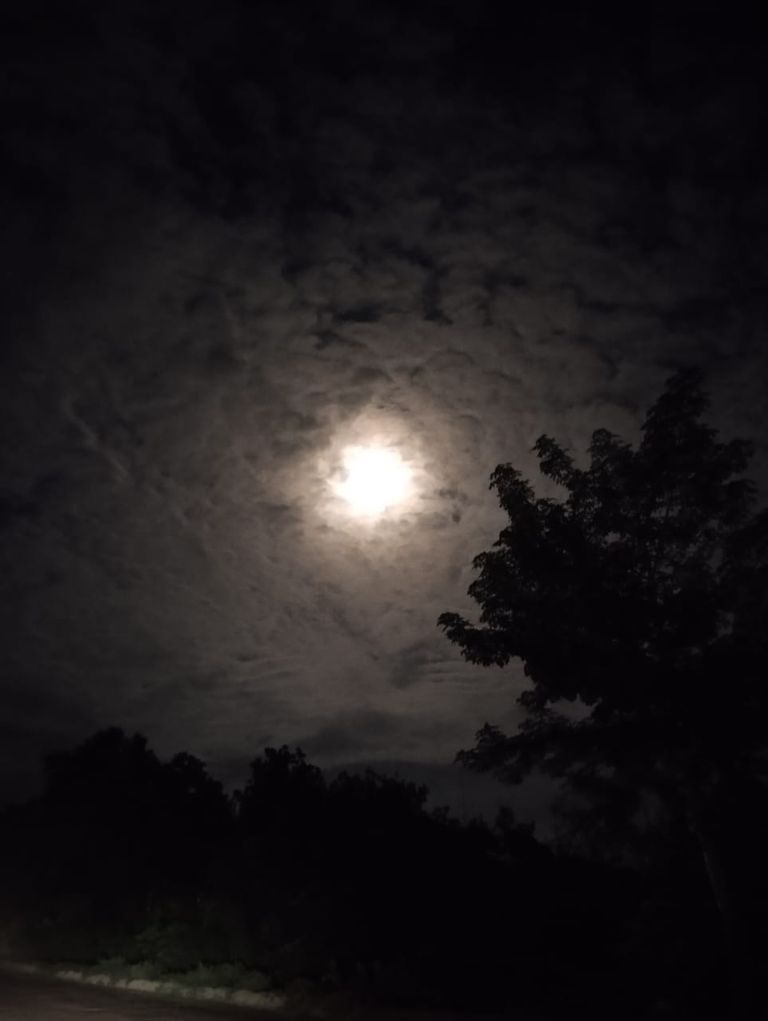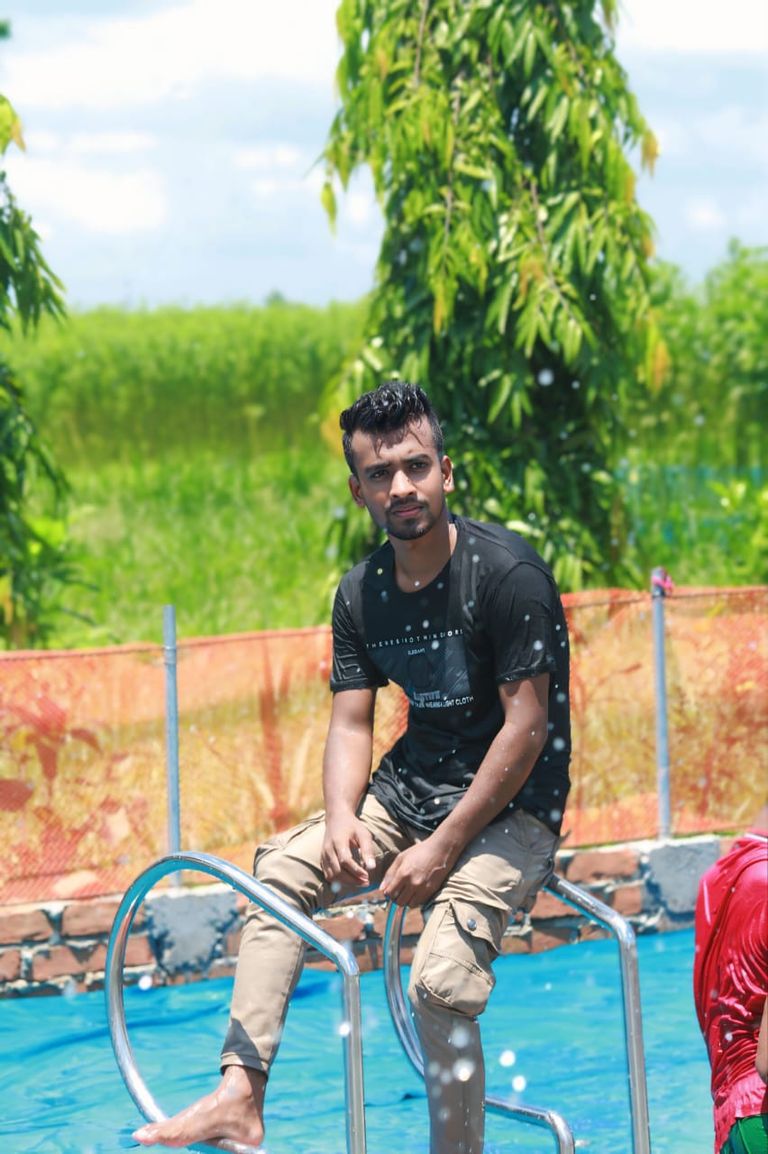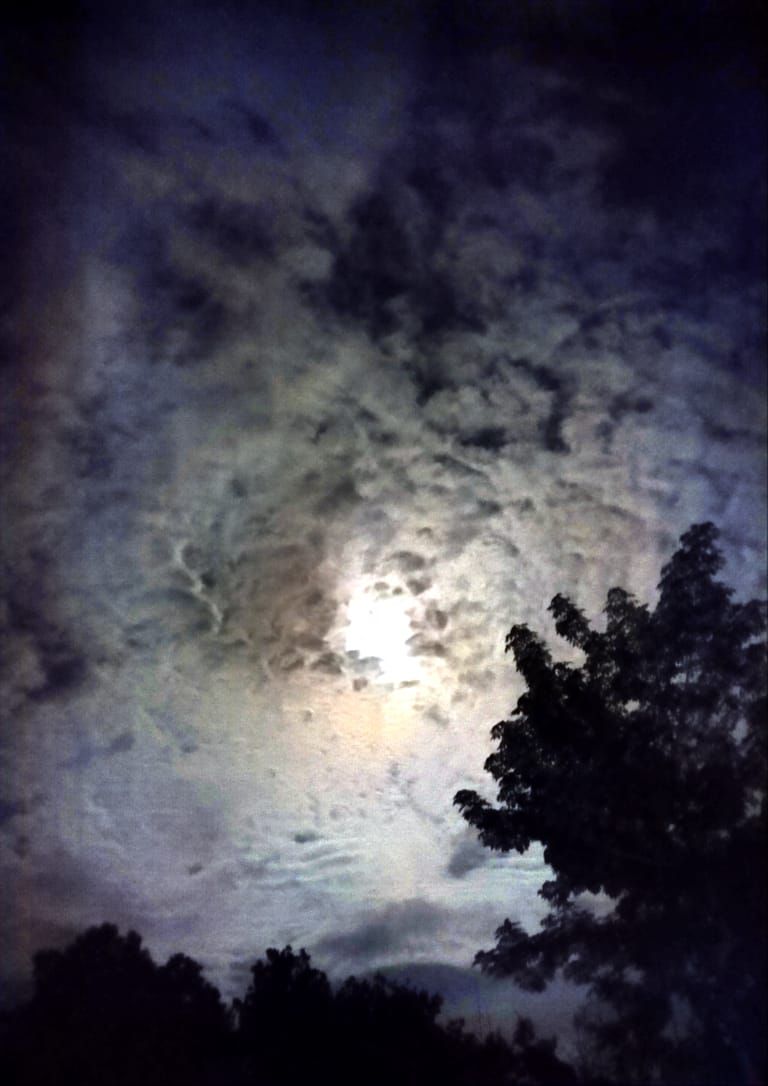Assalamu Alaikum/Hello
Friends of my blurt space Community
I'm @sawfin001 from Bangladesh

Night photography, with its serene beauty and captivating aura, opens up a world of creativity and magic that is not visible during the day. The charm of long exposure photography, the interplay of light and shadows, and the twinkling of stars against a deep indigo sky make it an alluring pursuit for photographers. One such night, described as Ekda Ek Jotsna in many South Asian cultures, which translates to Once Upon a Moonlit Night, provides the perfect backdrop for an enchanting night photography experience.
This night isn't just about capturing the moon itself; it's about exploring the entire scene that unfolds under its silvery light. From softly illuminated landscapes to mystical silhouettes, from star trails to the delicate reflections on water bodies, Ekda Ek Jotsna creates a mesmerizing environment that demands to be immortalized through the lens.
The Significance of Moonlit Nights
A moonlit night holds a special place in the hearts of many, from poets to photographers. On a clear night when the moon is full or nearly full, the landscape undergoes a transformation. The moon’s soft light bathes the surroundings, creating a peaceful, almost surreal atmosphere.
Photographers often find themselves drawn to such nights, not just for the aesthetic appeal but for the unique challenges and opportunities that lunar light provides. The moon acts as a natural source of light in night photography, and its luminosity can affect exposure times, ISO settings, and composition. Moreover, Ekda Ek Jotsna, with its folklore and cultural significance, adds a layer of storytelling to the experience, making it not just a technical pursuit but a poetic one.
Planning for the Perfect Moonlit Night Photography

Night photography, especially under a full moon, requires careful planning. The first step in ensuring a successful shoot is timing. The photographer needs to know when the moon will rise and set, and whether the weather will cooperate. Clouds can both enhance and obstruct the shot, depending on the effect you're going for, but on a clear night, the goal is to have as much moonlight as possible.
For Ekda Ek Jotsna night photography, it’s essential to scout for locations that benefit from lunar illumination. Places such as lakes, fields, and hills, which reflect the light or create dramatic shadows, are ideal. Seaside landscapes, with the moon reflecting off the water, or mountainous terrains where the moon illuminates the peaks, create visually compelling images.
Essential Equipment for Moonlit Photography
While the scene might be bathed in moonlight, night photography still comes with its technical demands. The following equipment is essential for capturing the beauty of Ekda Ek Jotsna:
Camera with Manual Settings: A camera that allows manual control over exposure, ISO, and aperture is critical. Night photography often requires long exposures and high ISO settings, so having a camera that performs well in low light is ideal.
Tripod: Since night photography requires long exposures, any small movement can result in blurry images. A sturdy tripod ensures the camera stays still throughout the exposure, which can range from a few seconds to several minutes.
Wide-angle Lens: A wide-angle lens allows photographers to capture more of the night sky, including stars, clouds, and the horizon. It’s also ideal for capturing large, sweeping landscapes under moonlight.
Remote Shutter Release: To minimize camera shake during long exposures, a remote shutter release or the camera’s timer function can be used.
Low Light Filters: In some cases, filters can enhance certain aspects of the scene. Neutral density filters, for example, help control the amount of light entering the lens, useful for very bright moonlit nights where you might want to extend exposure times without overexposing the shot.
Techniques for Capturing Ekda Ek Jotsna

Long Exposure: One of the most crucial techniques in moonlit photography is long exposure. The camera’s shutter needs to remain open for several seconds, or even minutes, to capture enough light to properly expose the scene. This also allows for star trails and the movement of clouds to be captured, creating a dreamy effect. For moonlit landscapes, an exposure time of 10-30 seconds is often a good starting point.
Aperture and ISO Settings: Shooting under moonlight requires a careful balance between aperture and ISO settings. A wider aperture (f/2.8-f/4) allows more light into the lens, which is helpful for night photography. However, since too high an ISO can introduce grain or noise into the image, it’s often better to keep the ISO lower (around 800-1600) and increase the exposure time instead.
Moon as a Subject: On a night like Ekda Ek Jotsna, the moon itself can become a central subject of the photograph. However, capturing the moon requires a different approach than photographing the landscape under moonlight. To photograph the moon clearly, a faster shutter speed and lower ISO are necessary to prevent overexposure. Since the moon reflects a lot of sunlight, it is much brighter than the surrounding sky.
Reflections and Silhouettes: Moonlit nights offer ample opportunities to play with reflections and silhouettes. For example, the reflection of the moon on a calm lake creates a stunning visual. Silhouettes of trees, people, or structures against the bright moonlight add drama and mystery to the scene. Positioning the camera so that a person or object is backlit by the moon can result in striking, high-contrast images.
Star Trails and Night Sky: Ekda Ek Jotsna isn’t just about the moon; it’s also about the vast night sky. Using long exposures, it’s possible to capture star trails – the apparent movement of stars as the Earth rotates. By extending the exposure to several minutes or hours, the camera records the movement of the stars, resulting in stunning circular or streaked patterns across the sky.
The Emotion Behind Ekda Ek Jotsna Photography
Night photography under a moonlit sky is not just a technical process; it’s an emotional journey. The stillness of the night, the soft glow of the moon, and the quiet solitude of nature create an atmosphere of reflection and wonder. Photographers often describe the experience as meditative, where time seems to slow down, and the world becomes more intimate and personal.

On a cultural level, Ekda Ek Jotsna holds a romantic and mystical significance. Many stories and legends surround moonlit nights, and this cultural backdrop adds depth to the photographs. Each image tells a story, not just of the landscape but of the emotions and history connected to such nights. In many parts of the world, the full moon is associated with celebrations, festivals, and gatherings, making it a symbolic time to capture.